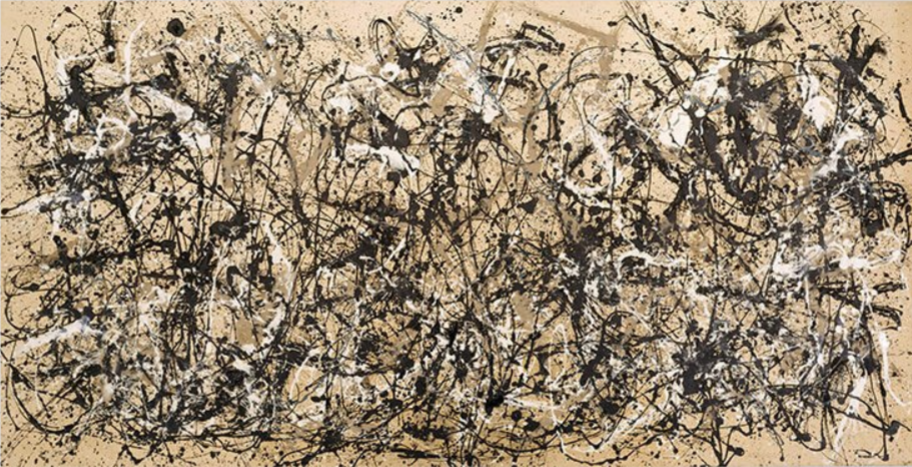What Is Aesthetic Experience?
Aesthetic Experience by definition An aesthetic experience arises in response to works of art or other aesthetic objects. Although the term aesthetic itself was not introduced until the eighteenth century, it is clear that what are identified in contemporary discussions as "aesthetic experiences" were "felt" by individuals long before this: for example, when Plato worried about excessively emotional reactions to recitations of poetry or when Aristotle described the positive effects of attending the theater. Nevertheless, the exact nature of aesthetic experience—even the idea that there is such a unique form of experience—remains a matter of controversy.1
‘x is an art work if and only if (1) x is produced with the intention that it possess a certain capacity, namely (2) the capacity of affording aesthetic experience’.
06:36 - What, to you, is the difference between taste and aesthetic experience?
10:06 - What is wrong with Dewey’s conception of aesthetic experience?2
'According to the version of internalism Beardsley advances in his Aesthetics (1958), all aesthetic experiences have in common three or four (depending on how you count) features, which “some writers have [discovered] through acute introspection, and which each of us can test in his own experience” (Beardsley 1958, 527). These are focus (“an aesthetic experience is one in which attention is firmly fixed upon [its object]”), intensity, and unity, where unity is a matter of coherence and of completeness (Beardsley 1958, 527). Coherence, in turn, is a matter of having elements that are properly connected one to another such that
[o]ne thing leads to another; continuity of development, without gaps or dead spaces, a sense of overall providential pattern of guidance, an orderly cumulation of energy toward a climax, are present to an unusual degree. (Beardsley 1958, 528)
Completeness, by contrast, is a matter having elements that “counterbalance” or “resolve” one another such that the whole stands apart from elements without it:
The impulses and expectations aroused by elements within the experience are felt to be counterbalanced or resolved by other elements within the experience, so that some degree of equilibrium or finality is achieved and enjoyed. The experience detaches itself, and even insulates itself, from the intrusion of alien elements. (Beardsley 1958, 528)
Dickie’s most consequential criticism of Beardsley’s theory is that Beardsley, in describing the phenomenology of aesthetic experience, has failed to distinguish between the features we experience aesthetic objects as having and the features aesthetic experiences themselves have. So while every feature mentioned in Beardsley’s description of the coherence of aesthetic experience—continuity of development, the absence of gaps, the mounting of energy toward a climax—surely is a feature we experience aesthetic objects as having, there is no reason to think of aesthetic experience itself as having any such features:
Note that everything referred to [in Beardsley’s description of coherence] is a perceptual characteristic … and not an effect of perceptual characteristics. Thus, no ground is furnished for concluding that experience can be unified in the sense of being coherent. What is actually argued for is that aesthetic objects are coherent, a conclusion which must be granted, but not the one which is relevant. (Dickie 1965, 131)
Dickie raises a similar worry about Beardsley’s description of the completeness of aesthetic experience:
One can speak of elements being counterbalanced in the painting and say that the painting is stable, balanced and so on, but what does it mean to say the experience of the spectator of the painting is stable or balanced? … Looking at a painting in some cases might aid some persons in coming to feel stable because it might distract them from whatever is unsettling them, but such cases are atypical of aesthetic appreciation and not relevant to aesthetic theory. Aren’t characteristics attributable to the painting simply being mistakenly shifted to the spectator? (Dickie 1965, 132)'3
Sources
1 https://www.encyclopedia.com/humanities/encyclopedias-almanacs-transcripts-and-maps/aesthetic-experience
2 https://www.youtube.com/watch?v=BLD66XcIOqY
3 https://plato.stanford.edu/entries/aesthetic-concept/#AesExp
Image
Jackson Pollock, Autumn Rhythm (Number 30)
https://artsolido.com/2017/02/25/value-judgments-constitute-the-substance-of-aesthetic-experience-by-greenberg/
nce
Blob fish, Ashleigh's Animals, 10/13/2017
https://mountainrants.weebly.com/ashleighs-animals/blob-fish
Tracey Emin – My Bed, 1998, box frame, mattress, linens, pillows and various objects, overall display dimensions variable, photo: CC BY-SA 2.0 by fry_theonly
https://publicdelivery.org/tracey-emin-bed/






